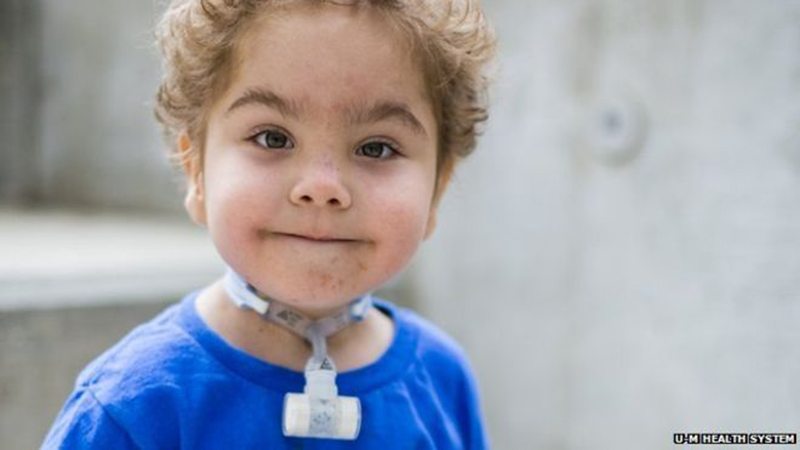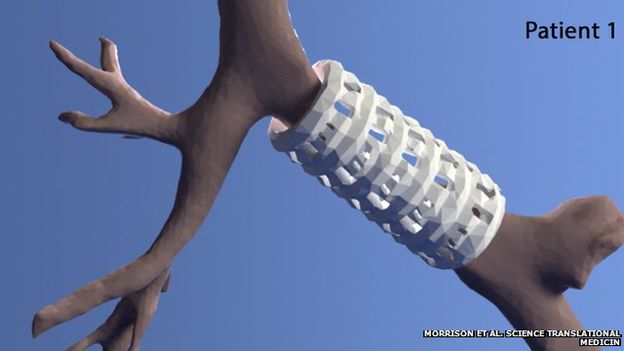The medical breakthrough was created specially for each child and was made from a material that changes shape as the children grow.
Patients equipped with the implant suffer from a rare illness that means their windpipes can collapse and prevent air getting in.
Researchers from the University of Michigan say the splints could become a promising option for the condition which has no cure.
However, due to the small number of children involved the study cannot prove it will work in every case, they were quick to argue.
Tracheobronchomalacia, a weakening and collapse of the trachea (windpipe), affects one in every 2,000 children.
The most severe cases often result in death, unless the children can survive until the age of three, when their windpipes often strengthen enough to allow them to breath well.
Hence why the 3D printed windpipe is made of bio-absorbable material that dissolves with age.
The splint is similar to a section of vacuum cleaner pipe that is split in the middle, doctors said of the advanced piece of medical engineering.
Doctors sew the material in place on the outside of the windpipe as an incomplete ring, with the aim for it to provide support without constricting growth.
Kaiba Gionfriddo was one of the lucky patients who had the procedure when he was just three months old.
The young boy was in a critical condition, needing intensive care because his body was not getting the oxygen.
Three years on, the splint has started ‘melting’ away and doctors say his windpipe appears strong enough for him to breathe unassisted.
“The first time he was hospitalised, doctors told us he may not make it out,” his mother April Gionfriddo told reporters.
“It was scary knowing he was the first child to ever have this procedure, but it was our only choice and it saved his life.”
The same team of doctors who carried out the surgery for Kaiba did so for two other children.
Both are back at home, though one continues to need a machine to help his breathing, because of problems the splint could not address.








